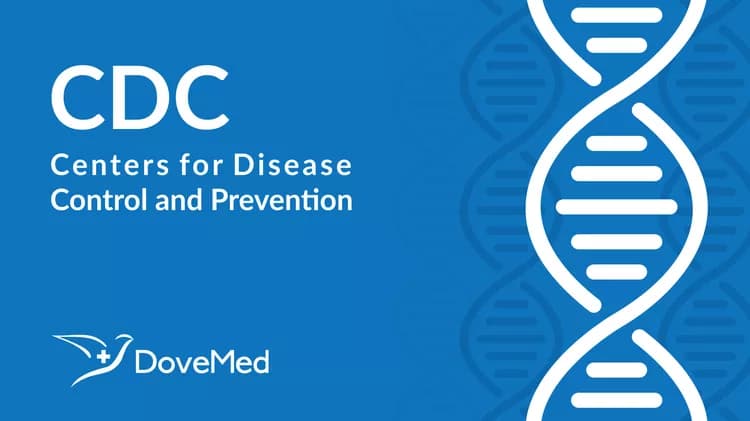
African Americans and People Living in Southeast U.S. More Likely to Have a Stroke
African Americans and People Living in Southeast U.S. More Likely to Have a Stroke
Death Rates Also Higher for African Americans
Two studies issued by the Centers for Disease Control and Prevention (CDC) in this week's Morbidity and Mortality Weekly Report show that racial and regional disparities in stroke prevalence and stroke-related deaths still continue to exist in the United States, particularly among African Americans.
In the first study, researchers found that the years of potential life lost due to stroke by African Americans before age 75 was more than double that of all other races. The second report provides further evidence that the prevalence of stroke is higher in the Southeast, also known as the "Stroke Belt," and is most significant among African Americans.
"As we observe National Stroke Awareness Month, these two studies serve as sobering reminders that it is crucial that we do everything within our power to educate people about the steps they can take to reduce their risk for stroke. We especially need to reach African Americans and people living in the Southeastern United States," said Donna Stroup, Ph.D., director of CDC's Coordinating Center for Health Promotion. "We must improve access to health care and look at creative ways to increase public awareness of the early signs of stroke, particularly among those most at risk."
The first study titled, "Disparities in Deaths from Stroke Among Persons Aged <75 Years ― United States, 2002," used national and state mortality data based on death certificate information reported to CDC for 2002. The study found that approximately 3,400 more stroke deaths than would be expected occurred among African Americans before age 65. Age adjusted stroke death rates before age 65 ranged from 37.4 (per 100,000 population) in New York to 74.3 (per 100,000 population) in Arkansas. Age-adjusted estimates of years of potential life lost before age 75 ranged from 132.7 (per 100,000 population) in Vermont to 361.0 (per 100,000 population) in Mississippi.
The second study, "Regional and Racial Differences in Prevalence of Stroke – 23 States and the District of Columbia, 2003," used data from the 2003 Behavioral Risk Factor Surveillance System collected from 23 states and the District of Columbia. The states were divided in two categories ― Southeast states (Alabama, Arkansas, Georgia, Kentucky, Louisiana, Mississippi, North Carolina, South Carolina, Tennessee, and Virginia) and non-Southeast states (Alaska, Colorado, Connecticut, Hawaii, Maine, Maryland, Minnesota, Montana, Nebraska, New York, North Dakota, Ohio, West Virginia, and the District of Columbia). The study found that the prevalence of stroke was higher in the Southeast than non-Southeast states. Stroke prevalence was highest among African Americans residing in the Southeastern region (3.4 percent) compared to African Americans in non-Southeastern states (2.8 percent), white residents of Southeastern states (2.5 percent), and white residents of non-Southeastern states (1.8 percent). Differences in demographics, education, uninsured medical care and risk factors for stroke accounted for a substantial proportion of the higher stroke prevalence in the Southeast.
"It is critical that we properly address the risk factors for stroke, such as diabetes, high blood pressure, smoking, and overweight and obesity," said Dr. George A. Mensah, acting director for CDC's National Center for Chronic Disease Prevention and Health Promotion. "We must continue efforts to help people make the kind of lifestyle choices that can help prevent stroke, like eating a healthy diet, getting regular physical activity and not smoking. We must also continue to raise awareness of the signs and symptoms of stroke, stress the importance of calling 9-1-1 and improve emergency response and quality of care for stroke victims."
An estimated 700,000 people in the United States will have a stroke in 2005. Approximately 160,000 people will die from stroke, and 15 percent to 30 percent of stroke survivors will be disabled permanently. Recognizing the warning signs for stroke and immediately seeking emergency medical care are critical first steps toward obtaining appropriate treatment that might prevent death and disability. In observance of National Stroke Awareness Month, the public is encouraged to become familiar with the warning signs of stroke: 1) sudden numbness or weakness of the face, arm, or leg, especially on one side of the body; 2) sudden confusion, including trouble speaking or understanding; 3) sudden trouble seeing in one or both eyes; 4) sudden trouble walking, dizziness, or loss of balance or coordination; and 5) sudden, severe headache with no known cause.
To obtain copies of the two stroke articles contained in this week's MMWR, please visit http://www.cdc.gov/mmwr. For more information about stroke prevention, visit CDC's Cardiovascular Health Program Web site at http://www.cdc.gov/cvh.
Related Articles
Test Your Knowledge
Asked by users
Related Centers
Related Specialties
Related Physicians
Related Procedures
Related Resources
Join DoveHubs
and connect with fellow professionals

0 Comments
Please log in to post a comment.